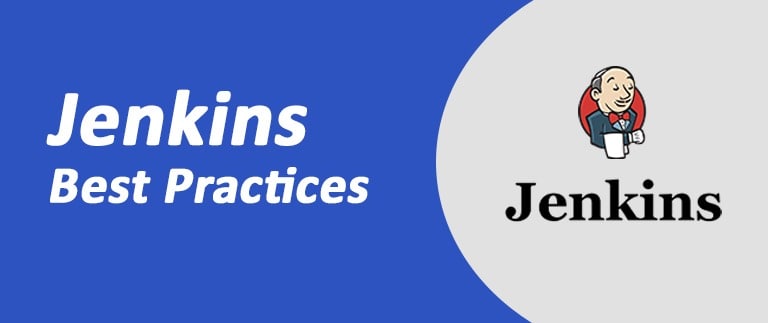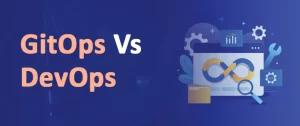Welcome to the exciting world of Jenkins, where automation meets seamless software development! Whether you’re a seasoned developer or just starting your journey in the world of DevOps, Jenkins is a tool that will revolutionize the way you build, test, and deploy your applications. In this blog post, we’ll dive into the fundamentals of Jenkins and explore some best practices to help you get started on your path to mastering this powerful CI/CD tool.
But first things first – what exactly is Jenkins? Well, imagine having an assistant who tirelessly takes care of all those repetitive tasks involved in software development. That’s precisely what Jenkins does! It acts as a reliable automation server that helps streamline your workflow by automating building, testing, and deploying code changes. With its robust features and extensibility options, it has become one of the most popular tools for continuous integration (CI) and continuous delivery (CD).
In this article, we’ll unravel the mysteries behind CI/CD pipelines in Jenkins. We’ll also discuss how they differ from other similar tools like GitHub Actions. Additionally, we’ll provide you with some invaluable best practices to ensure optimal performance and efficiency when using Jenkins.Are you ready to embark on an adventure where productivity soars sky-high while manual labor takes a back seat? Let’s delve into the world of Jenkins training together! So, buckle up and prepare yourself for an enthralling journey ahead.
What Are CI and CD Pipelines in Jenkins?
Continuous Integration (CI) and Continuous Delivery (CD) are crucial concepts in modern software development. They play a significant role in ensuring the efficiency, reliability, and quality of the software development process. Jenkins, as a popular automation tool, provides powerful CI/CD pipelines that enable developers to automate their workflows seamlessly.
At its core, CI is the practice of continuously integrating code changes from multiple developers into a shared repository. It involves automating build and test processes to identify issues early on. By regularly merging code changes into a central repository, teams can detect and resolve integration problems swiftly.
On the other hand, CD refers to the continuous delivery or deployment of software updates to production environments automatically. This includes processes such as packaging applications, configuring infrastructure, and running tests against different environments before deploying them safely for end-users.
In Jenkins, CI/CD pipelines act as a series of steps that define how an application should be built, tested, packaged, and deployed. The pipeline can include stages like building source code from version control systems like Git or SVN; running unit tests for quality assurance; creating deployable artifacts such as binaries or Docker images; deploying these artifacts to various environments using tools like Ansible or Kubernetes; and finally testing the deployed application in those environments.
One advantage of CI/CD pipelines is their ability to provide fast feedback loops during development cycles. Developers get immediate notifications if any change causes errors or failures during the build or test stages. This enables them to quickly identify and fix issues before they become more complex problems later down the line.
Another benefit is improved collaboration among team members due to increased transparency throughout the development process. With clearly defined pipeline stages visible to all stakeholders involved in software delivery – including developers QA teams – everyone has visibility into what’s being done at each step, along with who did what when making changes within it!By implementing well-designed CI/CD pipelines within the Jenkins training environment, organizations can streamline their software development life cycle significantly. They can reduce manual efforts, shorten release cycles, and improve overall productivity.
What Are the Best Practices in Jenkins?
Jenkins, a widely-used automation server, offers a plethora of best practices that can optimize software development and deployment processes. Firstly, it is crucial to adhere to a well-organized Jenkins setup. This involves creating a clear folder structure for projects and jobs, using descriptive job names, and leveraging labels and agents to distribute builds effectively across nodes. A streamlined setup ensures easy navigation and maintenance as the number of projects grows.
Secondly, implementing a robust version control strategy is vital. Integrating Jenkins with a version control system, such as Git, allows for the automatic triggering of builds upon code commits. This ensures continuous integration, reducing integration issues and promoting early bug detection.
Next, it’s essential to manage dependencies efficiently. Utilizing build tools like Maven or Gradle helps to manage project dependencies and ensures a consistent build environment. Additionally, caching dependencies and artifacts can significantly speed up build times and reduce load on external repositories.
Another best practice is to secure Jenkins properly. Implementing role-based access control (RBAC) ensures that users have appropriate permissions, reducing the risk of unauthorized access to sensitive data and configurations. Regularly updating Jenkins to the latest stable version and relevant plugins also helps to address security vulnerabilities.
Furthermore, Jenkins provides the option to parallelize builds, optimizing build times and resource utilization. By breaking down large tasks into smaller parallel ones, developers can significantly reduce build durations and improve feedback time.
Integrating automated testing into the build process is crucial for ensuring the quality of the software. Jenkins supports various testing frameworks, and setting up automated tests helps catch defects early in the development cycle, allowing developers to rectify issues promptly.
To maintain a stable and reliable Jenkins environment, periodic backups of configurations and critical data are essential. Backing up Jenkins configurations, plugins, and job definitions ensures rapid recovery in case of system failures or disasters.
Here are some other tips and details you can manage:
- Keep your pipeline configuration simple: Avoid unnecessary complexity in your pipeline configurations by breaking them down into smaller, more manageable stages. This will make it easier to troubleshoot issues and maintain the pipeline.
- Use version control for your pipeline scripts: Storing your Jenkins file or script in a version control system like Git enables better collaboration and traceability of changes. It also ensures that you have a backup of the script if anything goes wrong.
- Utilize agent labels: When setting up agents for job execution, use labels to specify which nodes should handle specific types of jobs. This allows for efficient resource allocation and prevents overloading any single node.
- Schedule builds during off-peak hours: Consider scheduling builds during non-business hours when server loads tend to be lower. This helps reduce contention for resources and improves overall performance.
- Implement security measures: Protecting sensitive information is crucial when working with Jenkins pipelines. Avoid hardcoding credentials or other secrets directly into your scripts; instead, utilize built-in features like credential plugins or external secret management tools.
- Regularly clean up old artifacts and workspaces: Accumulating unnecessary artifacts can consume valuable disk space over time, leading to performance degradation on the Jenkins server. Set up automated processes or periodic cleanup tasks to remove outdated build artifacts and workspace directories.
- Implement proper error handling mechanisms: Include appropriate error handling steps within your pipelines so that failures can be accurately identified, logged, and notified via email notifications or integrations with communication platforms like Slack.
By following these best practices in Jenkins administration and implementation, you’ll enhance productivity, efficiency, and security while ensuring successful software delivery through continuous integration (CI)and continuous deployment (CD) pipelines.
What Is the Difference Between Jenkins and GitHub Actions?
Jenkins and GitHub Actions are both popular tools used for CI/CD pipelines, but they have some key differences. Understanding these differences can help you choose the right tool for your workflow.
Jenkins is a widely-used open-source automation server that allows developers to automate various tasks in their software development lifecycle. It has been around since 2004 and has a large community of users and contributors. On the other hand, GitHub Actions is a newer offering from GitHub that provides similar functionality but is tightly integrated with the GitHub platform.
One major difference between Jenkins and GitHub Actions is the way they are configured. Jenkins uses a web-based interface where users define jobs by specifying various build steps in a graphical user interface or by writing scripts using Groovy language. In contrast, GitHub Actions use YAML configuration files directly within your repository, making it easier to version control your pipeline as code.
Another difference lies in their scalability and ease of setup. With Jenkins, you need to set up your own infrastructure either on-premises or on cloud providers like AWS or Azure. This requires managing servers, installing plugins, and maintaining updates manually. In comparison, GitHub Actions runs entirely on the cloud infrastructure provided by GitHub itself without any additional setup required.
Integration with external services also sets them apart. While both tools support integrations with popular code repositories such as GitLab or Bitbucket, Jenkins offers more flexibility in integrating with third-party tools due to its extensive plugin ecosystem built over years of development.
Furthermore, when it comes to pricing models, there’s an important distinction between Jenkins and GitHub Actions. As an open-source project supported by donations and sponsorships from companies like CloudBees (the company behind Jenkins), Jenkins itself doesn’t have any direct costs associated with it unless you require enterprise-level features or commercial support services from vendors like CloudBees themselves.
On the other hand, GitHub Actions offers free usage tiers for public repositories within certain usage limits. Jenkins professionals take Kubernetes online training, Terraform training, AWS DevOps training, Docker training, and other professional certifications to fully grasp the different steps of a typical DevOps structure.
Remember, mastering Jenkins takes time and practice. Stay updated with Jenkins training through our dedicated resources. Mindbox Trainings is a house of professional trainers with expertise in the DevOps sector. If you need Jenkins training that helps you embark on your professional journey in the IT industry, we are here to help you.
| “Want to take your IT career to the next level? Explore our Advanced Cloud Native DevOps Master Program to enhance your DevOps career now!” |
Amol Shete
Senior Software Engineer
A well-experienced DevOps engineer who loves to discuss cloud, DevOps, and Kubernetes. An energetic team player with great communication & interpersonal skills.





